GAPS Outline
The human digestive tract is lined with a thick bacterial layer (gut flora) that provides a barrier protecting us from outside invaders, produce natural antibacterial and antiviral substances, regulates the immune system, produces neurotransmitters, and keeps the pH acidic near the surface of the gut wall for protection. Poor diet, prescription medications, environmental toxins, chronic stress, and age are just a few factors that negatively impact gut flora. The GAPS Diet Protocol is divided into three parts designed to heal and seal the gut lining, restore the bacterial ecosystem within the gastrointestinal tract, and re-balance the immune system.
The GAPS Protocol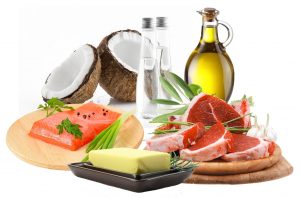
- Diet
- Supplementation
- Detoxification
Diet
GAPS patients have impaired digestion, making it difficult to break down foods into useful nutrients, leading to malnutrition and systemic inflammation. Low stomach acid, impaired liver function, holes in the digestive lining (leaky gut), and an overgrowth of pathogenic bacteria disrupt the proper digestive process, potentially leading to serious conditions including autoimmune, neurological, allergies, impaired skin barrier, asthma, IBS, chronic fatigue, mood disorders etc.
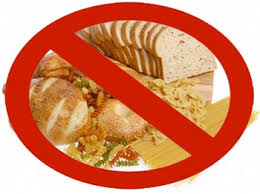 The GAPS diet restricts all grains, commercial dairy (apart from hard cheeses), starchy vegetables, processed carbohydrates, and refined sugars. These nutritionally void items are replaced with easily digestible and nutrient dense foods in order to give the cells of the gut lining and bacterial layer a chance to heal and rebuild. These foods include homemade meat stocks and bone broths, organic meats including chicken, beef, pork, turkey, venison, and duck, non-predator fish, fresh shellfish, organic fruits and vegetables, probiotic foods, nuts, and seeds.
The GAPS diet restricts all grains, commercial dairy (apart from hard cheeses), starchy vegetables, processed carbohydrates, and refined sugars. These nutritionally void items are replaced with easily digestible and nutrient dense foods in order to give the cells of the gut lining and bacterial layer a chance to heal and rebuild. These foods include homemade meat stocks and bone broths, organic meats including chicken, beef, pork, turkey, venison, and duck, non-predator fish, fresh shellfish, organic fruits and vegetables, probiotic foods, nuts, and seeds.
The nutritional part of the GAPS diet is divided into two sections: The Introduction Diet and the Full GAPS Diet. Once a patient has moved through the Full GAPS Diet, there is an additional stage outlined in Gut and Psychology Syndrome called Coming Off the GAPS Diet.
Introduction Diet
It generally takes patients 3-6 weeks to complete all six stages of Intro, however it is very individual. The Introduction Diet is designed for patients with severe digestive issues including chronic diarrhea, IBS, Crohn’s, gastritis, and Ulcerative Colitis as well as patients with serious neurological conditions including autism, schizophrenia, depression, and bipolar. Some patients may exhibit neurological conditions with no clear digestive symptoms and may be able to move through the Introduction Diet more quickly, listening to their body and observing for negative reactions. For a detailed outline of the Introduction Diet please go here.
Full Gaps Diet
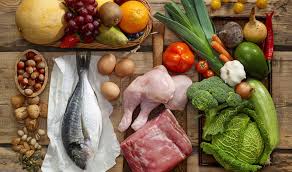 Once a patient has moved through the six stages of the Introduction Diet, they are ready to move onto the Full GAPS Diet. For patients who skipped the Introduction Diet, Dr.Campbell-McBride recommends following the Dairy Introduction Structure outlined in the Gut and Psychology Syndrome book when introducing dairy products. It is important to remember the majority of the patient’s diet should consist of antibiotic-free and hormone-free meats, non-predator fish, organic eggs, fermented/probiotic foods, and vegetables. Overindulging in baked goods made from nut flours and fruit can be detrimental to the healing process and should only be consumed in moderation. For patients suffering from yeast overgrowth, temporarily eliminating fruit, honey, and nuts may be beneficial. For a detailed outline of the Full GAPS Diet please go here.
Once a patient has moved through the six stages of the Introduction Diet, they are ready to move onto the Full GAPS Diet. For patients who skipped the Introduction Diet, Dr.Campbell-McBride recommends following the Dairy Introduction Structure outlined in the Gut and Psychology Syndrome book when introducing dairy products. It is important to remember the majority of the patient’s diet should consist of antibiotic-free and hormone-free meats, non-predator fish, organic eggs, fermented/probiotic foods, and vegetables. Overindulging in baked goods made from nut flours and fruit can be detrimental to the healing process and should only be consumed in moderation. For patients suffering from yeast overgrowth, temporarily eliminating fruit, honey, and nuts may be beneficial. For a detailed outline of the Full GAPS Diet please go here.
Supplementation
All patients handle nutritional supplements differently and may need additional targeted support other than the essentials recommended by Dr. Campbell-McBride. This is a matter for a qualified practitioner to decide. Only choose supplements with the least amount of added ingredients that may aggravate the gut condition.
The essential supplements to complement the GAPS Nutritional Protocol are: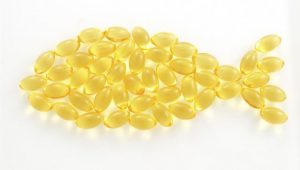
- Therapeutic strength probiotic
- Essential Fatty Acids
- Cod Liver Oil
- Digestive enzymes
- Vitamin and mineral supplements
To view a detailed and printable outline of the recommended supplements, please go here.
Detoxification and Lifestyle Changes
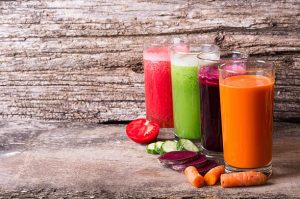 Toxins are everywhere. Normal bodily processes and gut bacteria produce and release by-products that could potentially become toxic with an overburdened detoxification system. The environment, lifestyle choices, emotional stress, household cleaning products, drinking water, etc. contribute to your body’s general toxic load, making it imperative to keep our internal cleansing system in optimal shape. Supporting the body’s natural cleansing process is necessary to remove heavy metals and toxins, repair damaged tissues, remove excess/non-functioning hormones, purify the blood, promote optimal oxygen levels, and keep us healthy. For a detailed outline on detoxification methods that support the GAPS protocol please go here.
Toxins are everywhere. Normal bodily processes and gut bacteria produce and release by-products that could potentially become toxic with an overburdened detoxification system. The environment, lifestyle choices, emotional stress, household cleaning products, drinking water, etc. contribute to your body’s general toxic load, making it imperative to keep our internal cleansing system in optimal shape. Supporting the body’s natural cleansing process is necessary to remove heavy metals and toxins, repair damaged tissues, remove excess/non-functioning hormones, purify the blood, promote optimal oxygen levels, and keep us healthy. For a detailed outline on detoxification methods that support the GAPS protocol please go here.
 Another important aspect of healing is reducing the general toxic load in your surrounding environment. Dr. McBride recommends keeping your house chemical free and avoid bringing anything into the home which will let off chemicals such as new carpet, furniture, and paints. Also remember that your skin absorbs just about everything it comes in contact with so be very cautious with products you put on your skin. Household plants are great at reducing the toxic air in your house. They consume the toxic gases and replace them with oxygen and other beneficial substances.
Another important aspect of healing is reducing the general toxic load in your surrounding environment. Dr. McBride recommends keeping your house chemical free and avoid bringing anything into the home which will let off chemicals such as new carpet, furniture, and paints. Also remember that your skin absorbs just about everything it comes in contact with so be very cautious with products you put on your skin. Household plants are great at reducing the toxic air in your house. They consume the toxic gases and replace them with oxygen and other beneficial substances.
